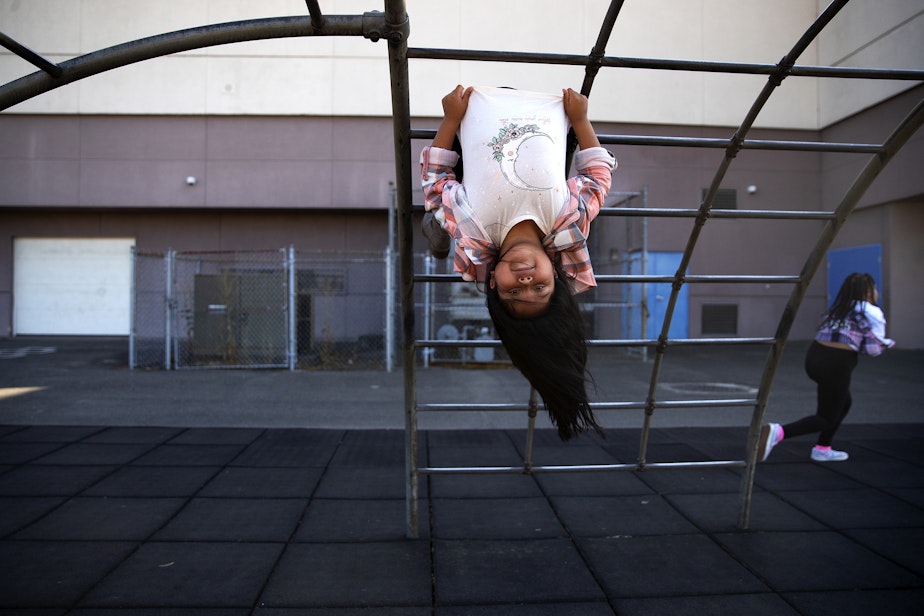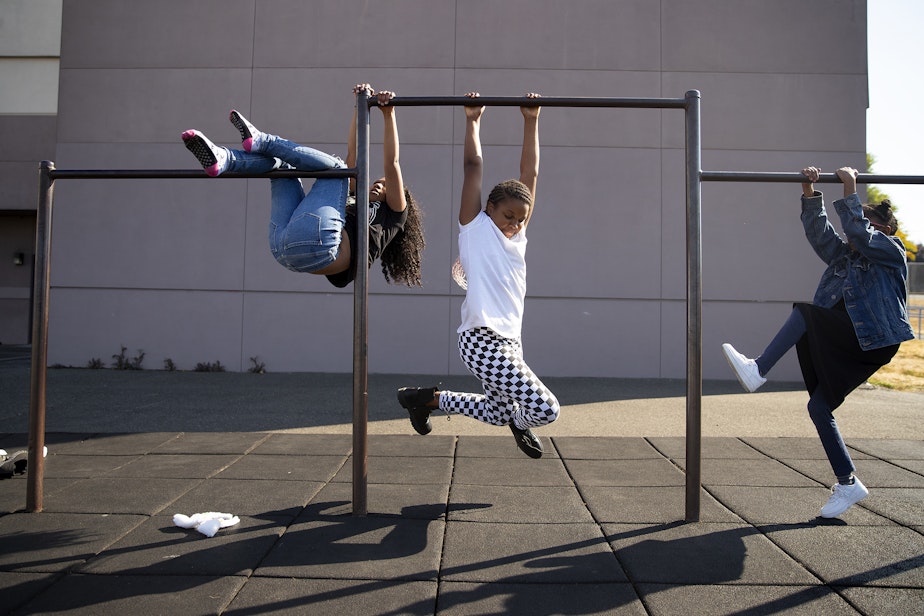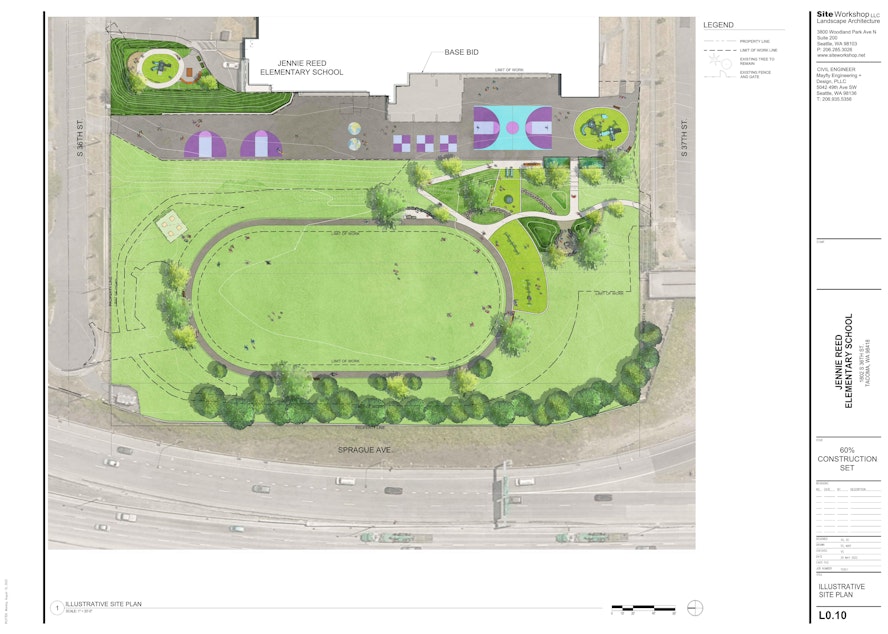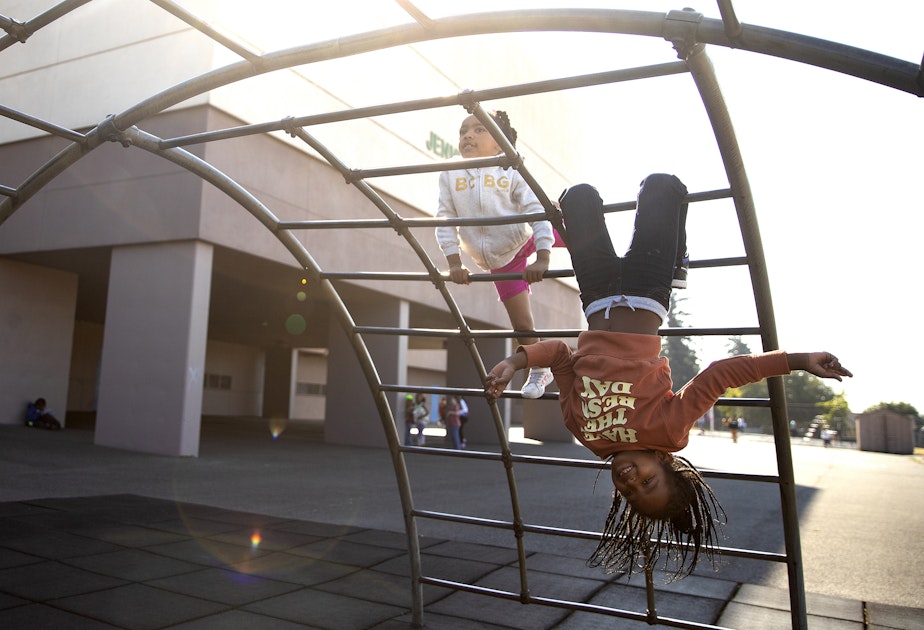Schoolyards aren’t just for recess — they can be for the whole community

When Jamie Amaya went to enroll her daughter in kindergarten at Jennie Reed Elementary in South Tacoma, the first thing she noticed was how dated the playground was.
“My kids call it ‘Old Rusty’ because it’s so old,” she said. “There are other schools that have a lot of nicer things: slides or much more interactive things for the kids to do.”
Now, a nonprofit, the Trust for Public Land, is stepping in to revitalize Jennie Reed’s schoolyard, along with four others in low-income South Tacoma neighborhoods with little or no park access.
The goal isn’t just to give kids a better place to play at recess; it’s to transform the schoolyards into high-quality community parks.
Living within a short walk of a well-maintained park with plenty of trees and amenities has documented physical and mental health benefits. In cities, there’s not much space to install new parks in neighborhoods that don’t have one — but lots of people live a short walk from a schoolyard.
A schoolyard, to be clear, is more than just a playground: It can also include open grassy fields, plants and trees, basketball courts, and maybe a track or a baseball diamond.

“Our goal is to renovate [schoolyards] and make sure that they are open to members of the public, community members, neighbors, on the weekends and after school,” said Sarneshea Evans, who’s overseeing the project in South Tacoma.
To date, the Trust for Public Land has revitalized nearly 300 schoolyards nationwide. In Tacoma, they’re working with an independent team of researchers to evaluate the effects of these projects on the health of the surrounding community.
Sponsored
There are several theoretical reasons to believe these projects are good for the community’s health. Park access can increase people’s physical activity, which can help reduce heart disease and diabetes. And spending time in parks is good for your mental health as well, reducing symptoms of anxiety and depression. Parks are also a place to socialize and connect with each other.
At Jennie Reed, the Trust for Public Land plans to add “new equipment, outdoor classrooms, and elements that will enhance [kids’] learning, their growth, their development, and their ability to recreate, play and be children,” Evans said.
They’re replacing rusty play structures with new ones and adding a real running track to replace the dirt path that’s currently there, and often flooded. They’re also adding ramps to make the schoolyard, which is downhill from the school, more accessible to children and adults in wheelchairs.

But in addition to the outdated amenities, some worry about the physical and mental health effects of the schoolyard’s location: At Jennie Reed, only a short wall separates the schoolyard from I-5.
“It’s a lot of car emissions that they’re breathing in,” Jamie Amaya said. “I mean, these kids are running, or if they’re doing physical activity outside, that’s what they’re breathing in.”
Sponsored
Exposure to air pollution increases asthma attacks and cardiovascular disease. It can harm children’s lung development and increase their susceptibility to respiratory infections. And noise pollution can increase children’s stress levels.
The Trust for Public Land is putting in mature trees along I-5, to try to cut down on noise and air pollution around the schoolyard.
“A single line of trees may not be that effective,” said Kathy Wolf, a professor at the University of Washington’s School of Environmental and Forest Sciences. She’s one of the researchers evaluating the Tacoma program’s impacts. “The research on air pollution and vegetation screening — you actually need a multi-height and ... certain length buffer.”
Sarneshea Evans, with the Trust for Public Lands, said the group is “collaborating with Tacoma Public Schools to determine the density of a green barrier.”
“While we would like to add as many trees as possible, we also have to take into consideration maintenance and upkeep of the schoolyard as well as the resources that would be needed,” she said in an email.

Jeff Rogers helps oversee schoolyards for Tacoma Public Schools. He said the reason some Tacoma schoolyards have decades-old equipment is that they’ve always competed with school buildings for funding from the Tacoma School District’s limited maintenance budget. Rogers said, historically, the only way to jump the maintenance line was for school PTAs to raise their own money.
“It's unfair for North Tacoma to get a really nice, elaborate system, but the east side or South Tacoma doesn't because they don't get the PTA funding that North Tacoma does,” he said.
To try to address that, five years ago, Tacoma Public Schools created a standard for all school playgrounds across the district: “eight different styles of playgrounds that vendors can provide,” Rogers said.
Then, in 2020, Tacoma voters approved funding to upgrade about a dozen Tacoma schoolyards.
Add that to the five schoolyards the Trust for Public Lands is paying for, and more than a third of Tacoma’s elementary schools will have brand-new playgrounds in the next few years.
Sponsored
At Jennie Reed Elementary, nine-year-old Alisa said she hopes the new playground has more swings, “because I normally like swinging and there's no swings on the playground,” she said.
She said she usually spends recess waiting for a swing to open up.

The redesign will add new swings — but it can’t solve everything: Jennie Reed’s schoolyard will still be next to the freeway, which leaves some parents uneasy.
Hypothetically speaking, the schoolyard could be moved to the other side of the school building – where the parking lot currently is – and away from the freeway. But swapping the schoolyard and parking lot around would block access to a water main, which Tacoma Public Utilities requires access to, according to Rogers.
Sponsored
Kids and parents are still thrilled. Jamie Amaya said she can’t wait for the new track.
“It’d be nice to come and play with my kids here,” she said. “If they’re running, I’m running with them. Or, if they’re playing, I’ll be running — you know, I have my time to go run around the track and get myself tired, get them tired. That helps with bedtime.”
The schoolyard should be fully renovated, new track and all, by the end of this school year.




